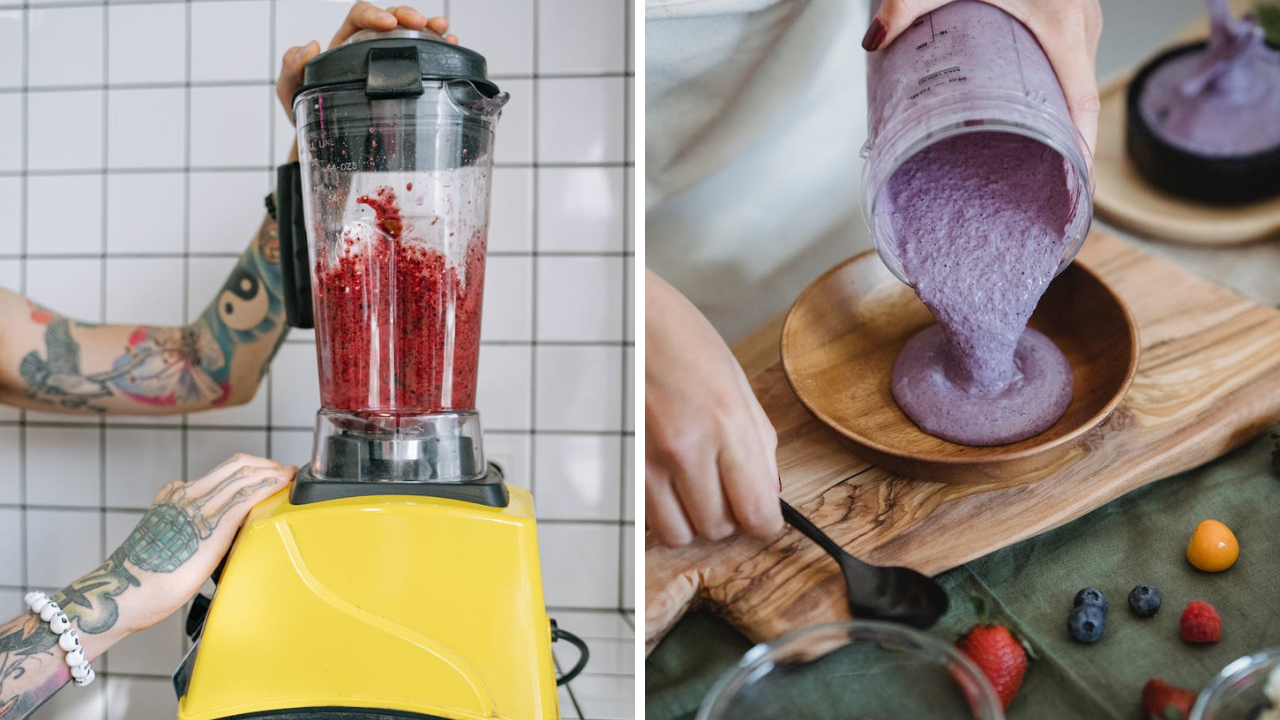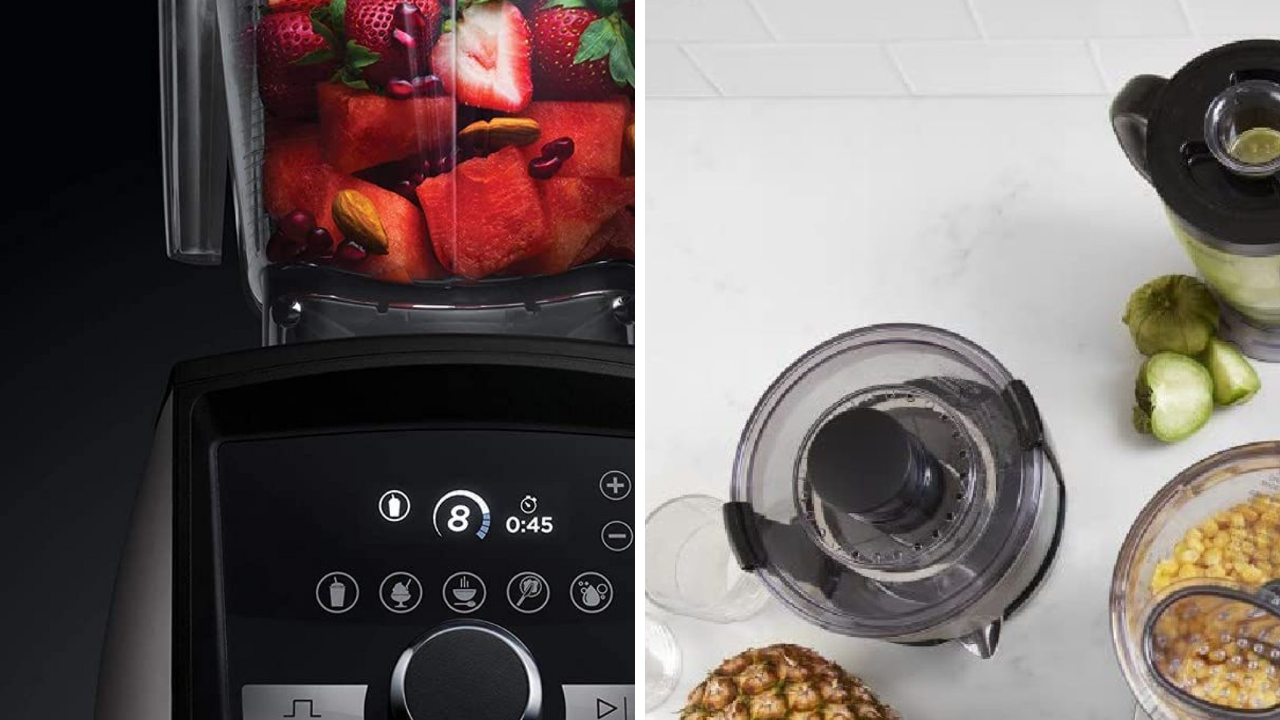Blenders are an essential kitchen appliance that can help you make a variety of delicious and healthy foods and drinks.
From smoothies and soups to dips and spreads, blenders can help you create a wide range of recipes with ease.
However, with so many different types of blenders available in the market, it can be challenging to choose the right one for your needs.
The first step in choosing the right blender is to understand the different types of blenders available.
Some of the most popular types of blenders include countertop blenders, immersion blenders, and personal blenders.
Each type of blender has its own unique features and benefits, making it suitable for different types of recipes and cooking needs.
Understanding the differences between these types of blenders can help you make an informed decision when it comes to choosing the right blender for your kitchen.
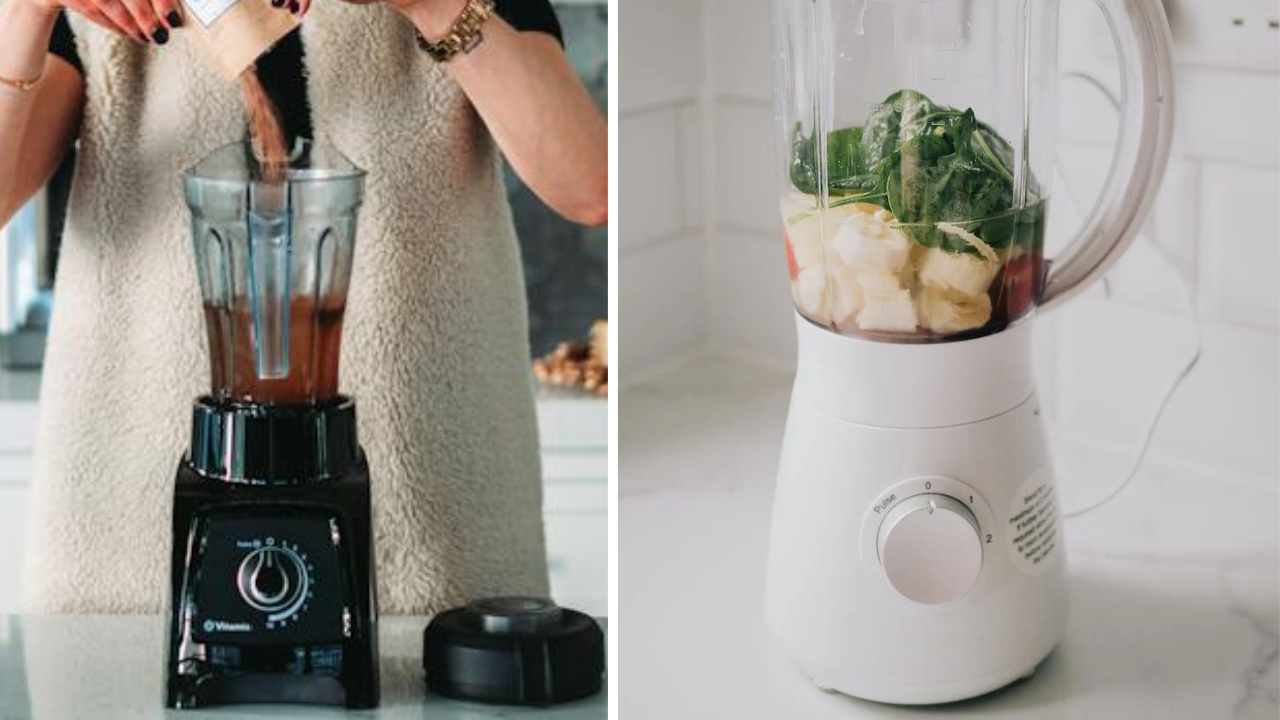
Key Takeaways
- There are different types of blenders available, including countertop blenders, immersion blenders, and personal blenders.
- Each type of blender has its own unique features and benefits, making it suitable for different types of recipes and cooking needs.
- Understanding the differences between these types of blenders can help you make an informed decision when it comes to choosing the right blender for your kitchen.
History of Blenders
Blenders have been around for over a century, with the first patent for a blender being filed in 1922.
The blender was invented by Stephen J. Poplawski, who was inspired by the drink mixers used in soda fountains.
Poplawski's invention was a handheld device that was used to mix drinks, and it quickly became popular in bars and restaurants.
In the 1930s, the blender was redesigned and marketed as a kitchen appliance. The first blender to be sold for home use was the Waring Blendor, which was introduced in 1937.
The Waring Blendor was a huge success, and it helped to popularize the blender as a kitchen appliance.
Over the years, blenders have continued to evolve and improve. In the 1950s, blenders with glass containers were introduced, which made it easier to see what was being blended.
In the 1960s, blenders with stainless steel containers were introduced, which were more durable and easier to clean.
Today, blenders come in a variety of shapes and sizes, with different features and capabilities.
Some blenders are designed for heavy-duty use, while others are designed for lighter use. Some blenders are designed to make smoothies and shakes, while others are designed to puree soups and sauces.
Overall, blenders have come a long way since their invention in the 1920s. They have become an essential tool in the kitchen, and they continue to be popular among home cooks and professional chefs alike.
Types of Blenders
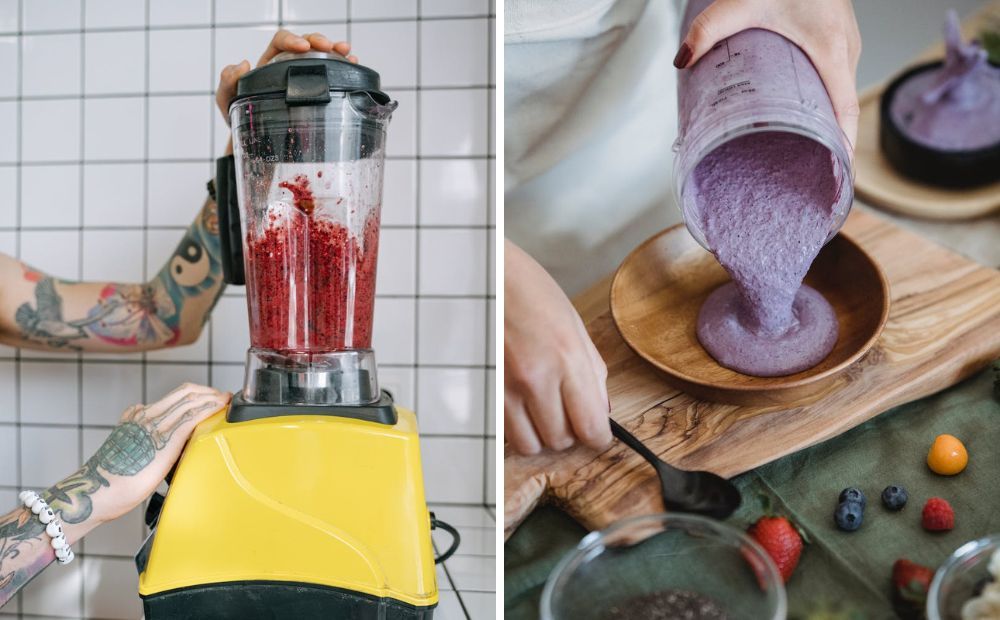
Countertop blender and a smoothie
Blenders are an essential kitchen appliance that can help you prepare a variety of food and drinks.
There are several types of blenders available in the market, each with its own unique features and benefits.
In this section, we will discuss the four most common types of blenders: countertop blenders, immersion blenders, personal blenders, and commercial blenders.
Countertop Blenders
Countertop blenders, also known as jug blenders, are the most common type of blender. They are designed to sit on a countertop and come with a large blending jar or pitcher.
These blenders are ideal for making smoothies, milkshakes, and purees. They are also great for crushing ice and blending frozen fruits.
Countertop blenders come in different sizes and power ratings, so you can choose one that suits your needs.
Immersion Blenders
Immersion blenders, also known as hand blenders, are handheld devices that are used for blending and pureeing food.
They are perfect for making soups, sauces, and baby food. Immersion blenders are easy to use and clean, and they take up very little space in the kitchen.
They come with different attachments, such as a whisk or a chopper, to make them more versatile.
Personal Blenders
Personal blenders, also known as single-serve blenders, are designed for making individual portions of smoothies and shakes.
They come with a blending jar that doubles as a travel cup, making them perfect for people on the go.
Personal blenders are compact, easy to use, and easy to clean. They are also great for making small batches of sauces and dips.
Commercial Blenders
Commercial blenders are heavy-duty blenders that are designed for use in restaurants, cafes, and other foodservice establishments.
They are powerful and can blend large quantities of food and drinks quickly and efficiently.
Commercial blenders come with different features, such as programmable settings and noise-reducing enclosures, to make them more suitable for commercial use.
In summary, there are four main types of blenders: countertop blenders, immersion blenders, personal blenders, and commercial blenders.
Each type has its own unique features and benefits, so it's important to choose one that suits your needs.
Features of Blenders
Blenders are a versatile kitchen appliance that can perform a range of functions, from making smoothies and soups to crushing ice and grinding nuts.
When choosing a blender, there are several features to consider to ensure that it meets your needs.
Speed Settings
Most blenders come with multiple speed settings, which can be adjusted depending on the task at hand.
For example, a low speed is ideal for blending soft fruits, while a high speed is better for crushing ice or grinding nuts. Some blenders also come with pulse settings, which allow you to quickly blend ingredients in short bursts.
Blade Types
Blenders come with different types of blades, each designed for specific tasks. For example, a serrated blade is ideal for crushing ice, while a flat blade is better for blending liquids.
Some blenders also come with multi-level blades, which can handle a range of tasks.
Jug Material
The material of the blender jug can affect its durability and performance. Glass jugs are sturdy and easy to clean, but they can be heavy and fragile.
Plastic jugs are lightweight and more durable, but they can become scratched and stained over time. Some blenders also come with stainless steel jugs, which are durable and easy to clean but can be heavy.
Noise Level
Blenders can be noisy, which can be a concern if you live in an apartment or have young children.
Some blenders come with noise-reducing features, such as sound enclosures or rubber feet, which can help to reduce the noise level.
Overall, when choosing a blender, it is important to consider your specific needs and preferences to ensure that you choose a model that meets your requirements.
Choosing the Right Blender
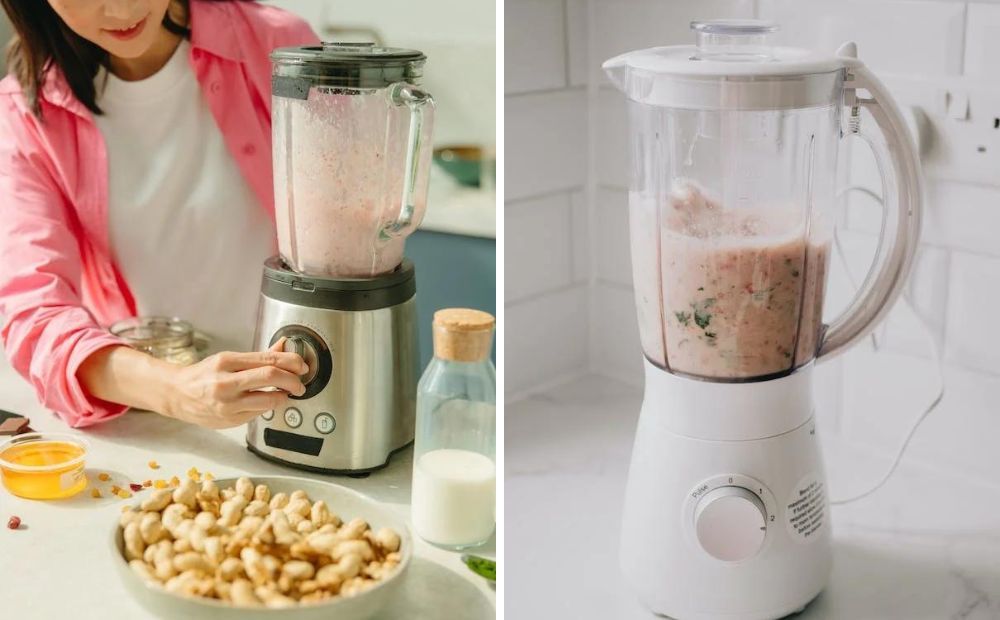
Countertop blenders
When it comes to choosing the right blender, there are a few things to consider.
Here are some factors to keep in mind:
Purpose
The first thing to consider is what you will be using the blender for. If you plan to make smoothies, you may want a blender with a powerful motor that can handle ice and frozen fruit.
If you plan to make soups or sauces, you may want a blender with a variety of speed settings and a pulse function. Think about what you will be using the blender for most often and choose a model that fits your needs.
Cost
Blenders can range in price from under $50 to over $500. While a more expensive blender may have more features and a more powerful motor, it may not be necessary for your needs.
Consider your budget and choose a blender that fits within it.
Durability
A blender is an investment, so you want to choose one that will last. Look for blenders with sturdy bases and durable blades.
Glass pitchers may be more durable than plastic ones, but they can also be heavier and more prone to breaking.
Consider the warranty offered by the manufacturer and read reviews from other consumers to get an idea of the blender's durability.
Ease of Cleaning
No one wants to spend hours cleaning a blender after use. Look for blenders with removable blades and pitchers that are dishwasher safe.
Some blenders also have self-cleaning functions, which can make cleanup even easier.
By considering these factors, you can choose a blender that fits your needs and your budget.
Safety Tips for Using Blenders
Blenders are a useful kitchen appliance for preparing smoothies, soups, and other recipes. However, they can also be dangerous if not used properly.
Here are some safety tips to keep in mind when using a blender:
- Always read the instruction manual before using the blender. This will help you understand how to properly assemble and use the appliance.
- Keep your hands and utensils away from the blades while the blender is in use. Never reach into the blender while it is running.
- Use caution when blending hot liquids. The steam can cause pressure to build up in the blender, which can cause the lid to pop off and hot liquid to spill out. Let hot liquids cool down before blending, or blend in small batches.
- Make sure the blender is turned off and unplugged before cleaning. Use a damp cloth to wipe down the base and blades, and never immerse the blender base in water.
- Keep the blender out of reach of children. Never let children operate the blender or play with the appliance.
By following these safety tips, you can ensure that you use your blender safely and enjoyably.
Maintenance and Care of Blenders
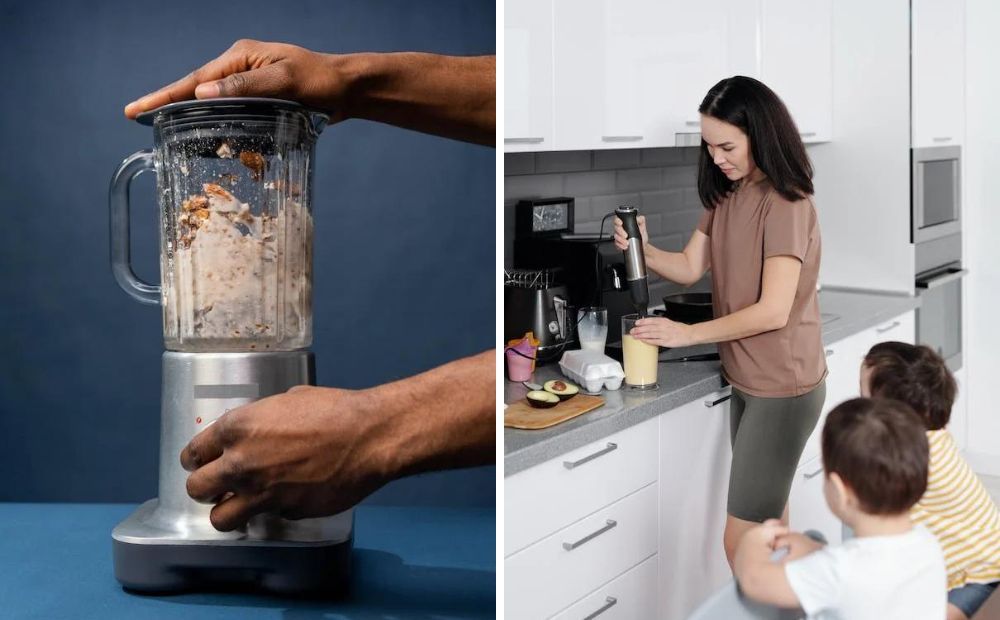
Blenders
Blenders require proper maintenance to ensure they last longer and perform optimally.
Here are some tips for maintaining and caring for your blender:
- Clean the blender after every use. This prevents the buildup of food particles and bacteria. To clean, disassemble the blender and wash the parts in warm soapy water. Rinse and dry thoroughly before reassembling.
- Do not immerse the motor base in water. Instead, wipe it down with a damp cloth and dry it immediately.
- Check the blender blades regularly for signs of wear and tear. If the blades are dull or damaged, they won't blend properly, and this can lead to motor burnout. Replace the blades as necessary.
- Lubricate the blender's moving parts regularly. This helps to reduce friction and prevent wear and tear. Use food-grade lubricant for this purpose.
- Store the blender in a cool, dry place when not in use. This prevents the accumulation of dust and dirt.
- Do not overload the blender with food. This can cause the motor to overheat and burn out. Refer to the manufacturer's instructions for the recommended maximum capacity.
By following these simple maintenance tips, you can extend the lifespan of your blender and ensure it performs optimally every time you use it.
Conclusion
There are several types of blenders available in the market, each with its unique features and advantages. The choice of the blender depends on the user's needs and preferences.
For those who are looking for a blender that can handle tough ingredients such as ice and frozen fruits, a high-performance blender is the way to go. These blenders are powerful and can blend even the toughest ingredients smoothly.
For those who need a blender for basic blending tasks such as making smoothies, purees, and soups, a standard blender is a good choice.
These blenders are affordable and can handle most blending tasks with ease.
Personal blenders are ideal for those who are always on the go and need a quick and convenient way to make smoothies and shakes. These blenders are compact and easy to use, making them perfect for busy individuals.
Finally, immersion blenders are perfect for those who need a blender for small blending tasks such as making sauces and dips.
These blenders are compact and easy to use, making them perfect for small kitchens.
Overall, choosing the right blender depends on the user's needs and preferences. With the right blender, anyone can enjoy delicious and healthy smoothies, soups, and other blended recipes.
Frequently Asked Questions
What are the different types of countertop blenders?
There are three main types of countertop blenders: conventional, high-performance, and personal. Conventional blenders are the most common and are suitable for most blending tasks. High-performance blenders are more powerful and can handle tougher ingredients like ice and nuts. Personal blenders are smaller and designed for single-serving smoothies and shakes.
What are the benefits of a hand blender?
Hand blenders, also known as immersion blenders, are versatile and easy to use. They can be used to blend soups, sauces, and smoothies directly in the pot or glass. They are also more compact and easier to store than countertop blenders.
How does the KitchenAid blender K400 compare to older models?
The KitchenAid K400 blender has a more powerful motor and larger blending jar than older models. It also has preset programs for smoothies, icy drinks, and soups. However, it is more expensive than older models.
Which brand makes the best blender for smoothies?
There are several brands that make high-quality blenders for smoothies, including Vitamix, Blendtec, and Ninja. It ultimately depends on personal preference and budget.
What features should I look for when choosing a countertop blender?
When choosing a countertop blender, consider the motor power, blending jar capacity, and speed settings. Look for additional features like preset programs, pulse function, and easy cleaning.
What is the difference between a KitchenAid blender Diamond and a regular blender?
The KitchenAid Diamond blender has a unique diamond-shaped blending jar that creates a vortex for efficient blending. It also has a more powerful motor than regular blenders.
In the market for a new blender? Check out our articles and top picks below:
